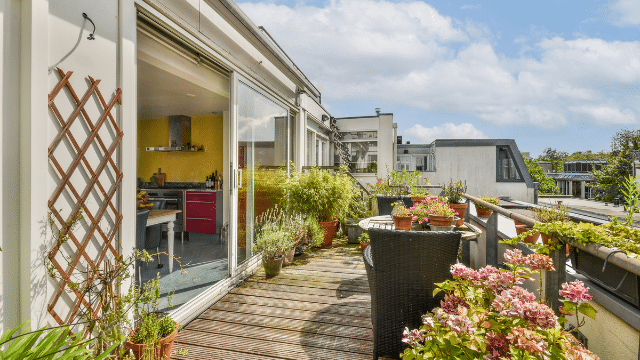When gardens and garages collide: who pays for the leaks between exclusive use areas
What happens when a lush exclusive use garden – neatly landscaped and lovingly maintained – sits directly above someone else’s exclusive use garage… and water starts seeping through?
That is the problem facing a group of trustees who recently contacted us for help. In their scheme, Exclusive Use Area (EUA) gardens have begun leaking into EUA garages below. The repairs including removal of the gardens, re-waterproofing, and reinstatement are estimated to be close to R1m.
So, the big question: who is responsible for the cost and how should trustees manage the potential conflict between affected owners?
Let us unpack this thorny issue.
Who maintains what? The legal landscape
The first step is understanding who is responsible for maintaining EUAs. The Sectional Titles Schemes Management Act[1] (“the STSMA”) and the Prescribed Management Rules (PMRs) set out a clear but sometimes misunderstood structure:
- EUAs are common property. They are owned by all the unit owners in proportion to their undivided shares, but allocated for the exclusive use of a particular owner or particular owners.
- Section 13(1)(c) of the STSMA requires the holder of the EUA to keep it neat and clean, but not necessarily to repair structural or waterproofing issues underneath it.
- Section 3(1)(r) of the STSMA places responsibility on the body corporate to maintain common property infrastructure that benefits more than one section, such as leaking pipes, cables, or waterproofing layers.
Maintenance responsibility depends on the cause of the leak. If it is due to natural deterioration of the waterproofing membrane, the body corporate is most likely liable. If it is due to negligence by the garden EUA holder (say, a broken sprinkler or improper drainage, or they drilled into the membrane), they may bear some or all of the cost.
This is why an expert engineering or water ingress report is critical. Trustees cannot apportion liability without first understanding the technical cause. This step may require more than one report.
Funding repairs - who pays the R1m
Once the source of the leak is established, trustees need to decide how the scheme will fund the repair. There are a few options:
a. Special levy
If the body corporate is liable, a special levy can be raised in terms of ss 3(3) and 3(4) of the STSMA.
b. Additional contributions by EUA holders
If the gardens caused the leak, or if the rules or written instruments conferring EUA rights to the owners assigned responsibility to the EUA holders, s 3(1)(c) of the STSMA allows trustees to require additional contributions from those owners.
c. Reserve fund
Trustees may use reserve funds if the repair forms part of the scheme’s maintenance, repair, and replacement plan. However, this will deplete reserves and may limit future spending flexibility. At some point, the reserve fund will need to be topped up.
d. Loan to the scheme
Trustees could explore external financing, especially if cash flow is tight. This spreads the cost over time but introduces interest and repayment obligations.
Read the fine print - notarial cessions and rules matter
How were the EUA rights granted?
- If the rights were conferred via registered notarial deed, the deed may define who maintains and repairs the area.
- If the rights were granted through the body corporate rules, the rules themselves may allocate responsibility.
In both cases, the source document is essential. It may determine whether the cost lies with the EUA holder, the body corporate, or is shared.
When gardens meet garages - what about the affected owners below?
This scenario adds complexity because the owners of the garages are not the same people as those with the leaking gardens above.
If the garden EUA holders are not at fault, but the water is damaging the garages, the body corporate has a duty to intervene and protect all property interests. Trustees cannot afford to ignore deterioration that affects multiple EUAs or units.
Dealing with personalities - why mediation is a must
In many schemes, personality clashes may come into play. This is common where one party feels aggrieved especially when cost, blame, or impact is not evenly shared. There is a lot of finger-pointing that goes in, and this does not help.
We recommend:
- Facilitated mediation between the EUA holders, affected owners, and trustees.
- Mediation may be private or through CSOS (the Community Schemes Ombud Service), which offers conciliation. If that fails, the matter may proceed to adjudication, something most schemes want to avoid unless there truly is no other alternative to resolve any impasse.
If the personalities make direct negotiation difficult, a neutral third-party mediator can help reduce friction and get solutions faster.
Action plan for trustees
Here is what trustees should do next:
- Commission a professional water ingress report to establish cause, location, and responsibility. If they refuse, the holders of EUAs may requisition one and potentially claim the cost back when all is resolved.
- Review the scheme’s rules and notarial cessions to determine maintenance obligations for specific EUAs.
- Engage affected parties, both garden and garage EUA holders, and communicate findings and funding options.
- Consider mediation if consensus cannot be reached.
- Identify funding options such as a special levy, reserve fund, additional contributions, or a loan.
- Document all steps taken, including resolutions, communications, and funding decisions.
Leaks are a legal issue, not just a maintenance one
This is not just about waterproofing. It is about interpreting the law, understanding scheme rules, and maintaining good governance. When water leaks from one EUA into another, trustees must tread carefully. With the right process, a technical report, and stakeholder consultation, the issue can be resolved legally and amicably.
Because in sectional title living, leaks may start in the slab but they often end up in the boardroom.
Our legal advisors are ready to assist you with any complex queries. Contact us today to get started.
FOOTER
[1] Act 8 of 2011.





